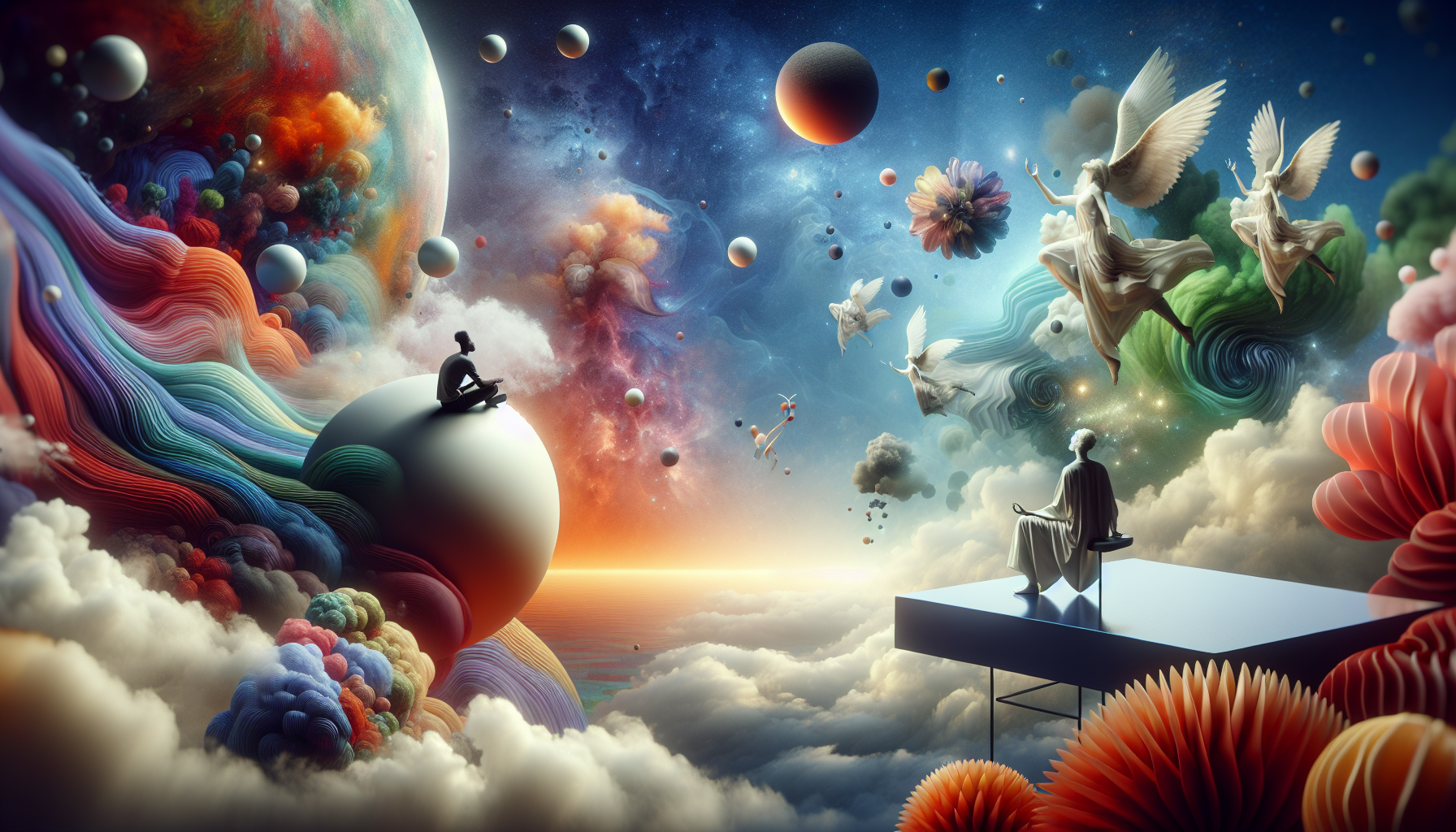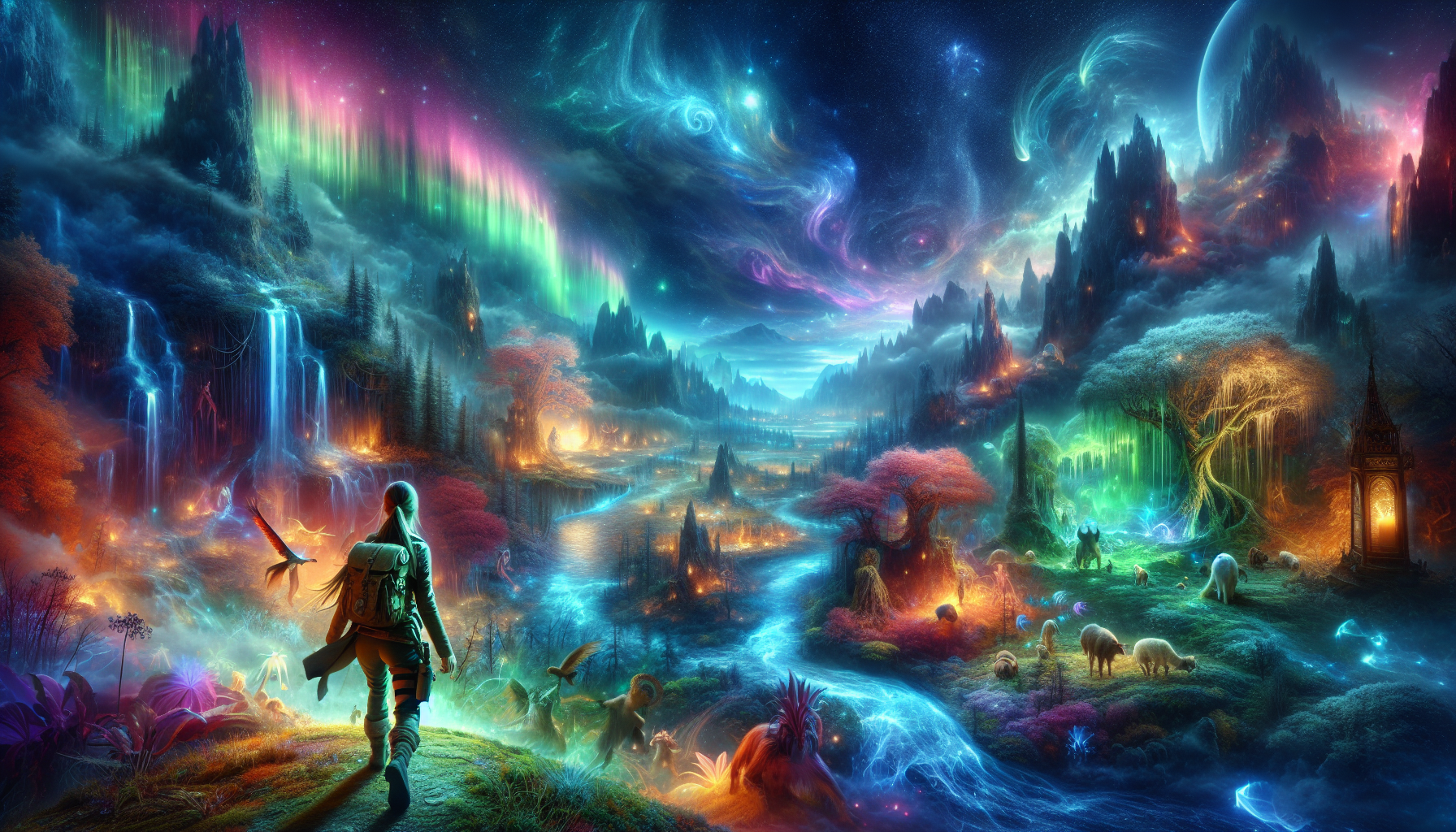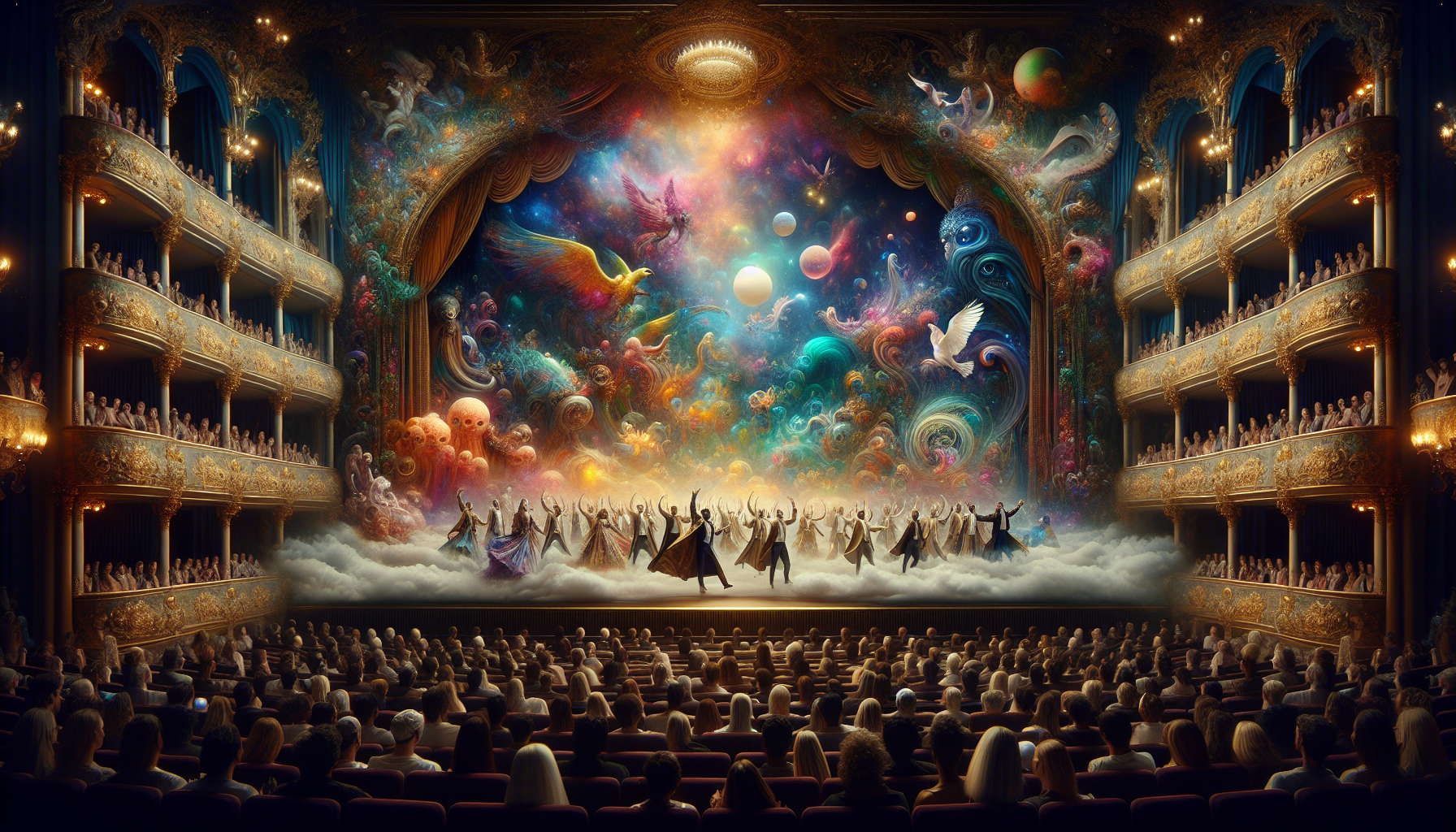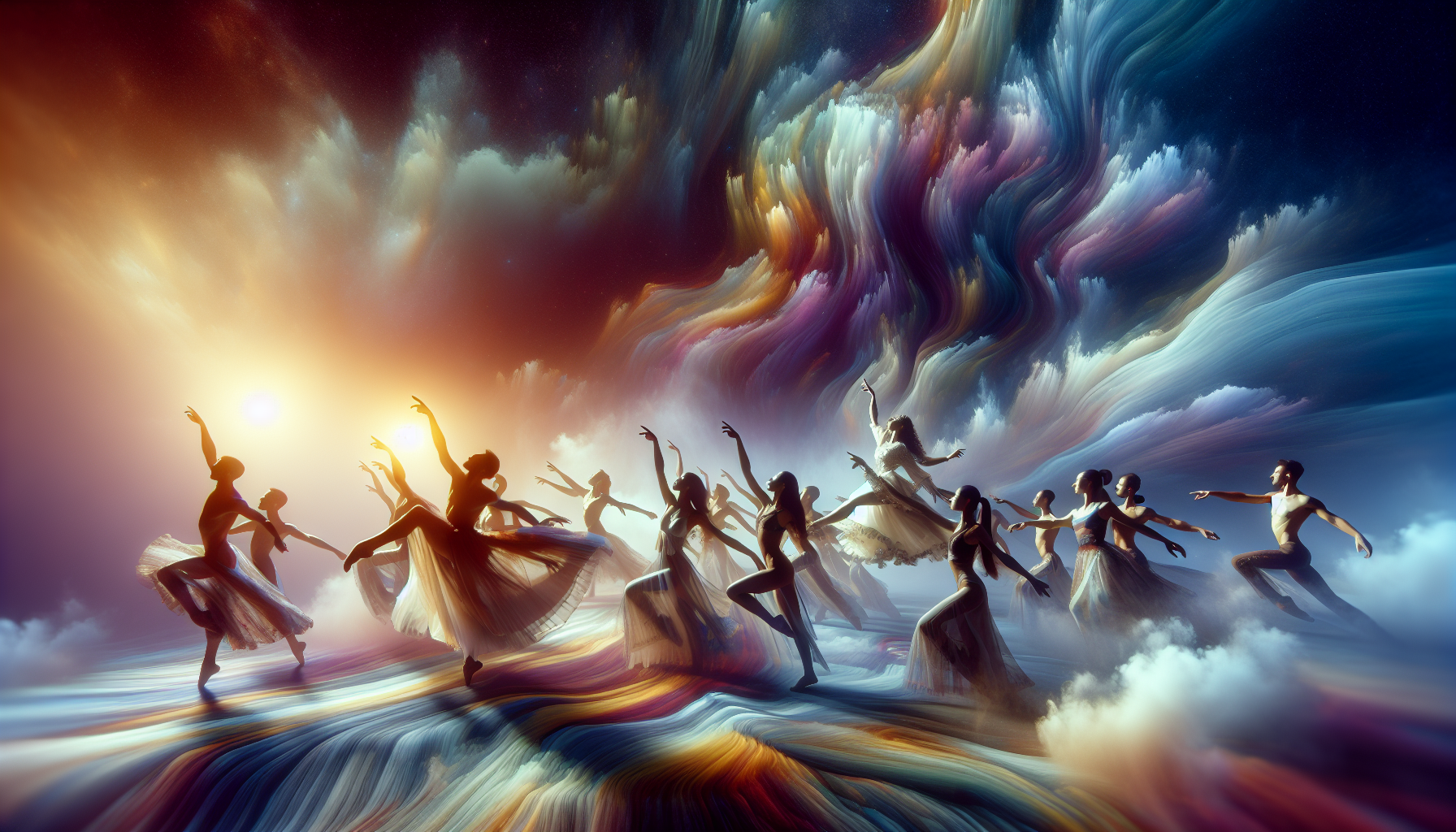In a world where logic often reigns supreme, dreams offer a gateway to the surreal—a dimension where the impossible becomes possible and the ordinary transforms into the extraordinary. Welcome to the enchanting realm of dreams, a place where imagination knows no bounds and creativity flourishes. It is within this dreamscape that surrealism was born, an artistic movement that dared to challenge conventional perceptions and explore the depths of the subconscious mind. In this article, we embark on a journey through the fascinating interplay between surrealism and art, unraveling how this avant-garde movement has profoundly influenced creativity across various artistic mediums.
Surrealism emerged in the early 20th century as a response to the rationalism that had dominated the preceding decades. Artists and writers sought to liberate the human psyche from the constraints of reality, tapping into the unconscious to unveil hidden truths and emotions. This movement was not merely an artistic endeavor; it was a revolutionary exploration of the human condition, an invitation to perceive the world through a lens of wonder and mystery. By delving into the subconscious, surrealists aimed to transcend the limitations of the conscious mind and unlock new dimensions of creativity.
As we delve deeper into the article, we will explore the foundational principles of surrealism and its historical context, examining how figures like André Breton, Salvador Dalí, and René Magritte spearheaded this movement with their iconic works. We will unravel the techniques they employed, from dream-like imagery to juxtaposition and automatism, and how these techniques continue to inspire contemporary artists. Moreover, we will examine the influence of surrealism beyond the visual arts, as its principles have permeated literature, film, and even modern advertising, showcasing its enduring impact on creative expression.
Join us as we navigate the captivating world of surrealism, uncovering the profound ways in which it has shaped the landscape of art and creativity. Through this exploration, we hope to ignite your imagination and inspire you to embrace the power of dreams in your own creative pursuits. Whether you are an artist seeking new inspiration or simply a curious soul eager to explore the boundaries of imagination, this journey promises to be a transformative experience. So, fasten your seatbelts and prepare to embark on an adventure through the surreal—where reality blurs and creativity knows no limits. 🎨✨
## The Origins of Surrealism and Its Philosophical Underpinnings
Surrealism, a 20th-century avant-garde movement, reshaped the landscape of art and creativity by merging reality with the dream world. Founded by André Breton in the early 1920s, the movement was heavily influenced by the psychoanalytic theories of Sigmund Freud, particularly his exploration of the unconscious mind. This philosophical foundation allowed surrealism to challenge conventional perceptions of reality, inviting both artists and viewers to delve into a realm where the rational meets the irrational.
The early surrealists were inspired by the chaos and disillusionment following World War I, seeking to escape through an exploration of the subconscious. They used techniques such as automatic writing and dream analysis to tap into the hidden recesses of the mind, aiming to bypass the limitations of rational thought. This approach resulted in artworks that were not only visually stunning but also intellectually provocative, encouraging a deeper understanding of the human psyche.
## Techniques and Styles: How Surrealism Challenges Reality
Surrealism is characterized by a variety of techniques and styles that push the boundaries of conventional art. Artists employed methods such as juxtaposition, dislocation, and transformation to create images that defy logical explanation. These techniques were instrumental in conveying the dreamlike quality that is synonymous with surrealism, allowing artists to explore themes of identity, perception, and reality.
Juxtaposition involves placing unrelated elements side by side to create a sense of dissonance and surprise. This technique encourages viewers to forge connections between disparate objects, inviting them to delve deeper into the underlying meaning. For example, Salvador Dalí’s “The Persistence of Memory” famously juxtaposes melting clocks against a barren landscape, challenging perceptions of time and reality.
Dislocation refers to the removal of an object from its usual context, often resulting in an unsettling or humorous effect. This technique is evident in René Magritte’s work, where familiar objects are presented in unexpected ways, prompting viewers to question their assumptions about reality. His painting “The Treachery of Images,” which depicts a pipe with the caption “This is not a pipe,” highlights the discrepancy between visual representation and reality.
Transformation involves altering an object’s form or function, often blurring the line between reality and fantasy. This technique is prevalent in Max Ernst’s collages, where ordinary objects are transformed into fantastical creatures. By manipulating reality in this way, surrealists encouraged audiences to re-evaluate their perceptions and embrace the infinite possibilities of the imagination.
TechniqueDescriptionExample ArtistJuxtapositionPlacing unrelated elements side by sideSalvador DalíDislocationRemoving objects from their usual contextRené MagritteTransformationAltering an object’s form or functionMax Ernst
## Surrealism’s Impact on Modern Art and Creativity
Surrealism’s influence extends beyond its historical context, continuing to inspire contemporary artists and creatives. Its emphasis on the subconscious mind and dreamlike imagery resonates with modern audiences, offering a means of exploring complex emotions and ideas. This section examines how surrealism has shaped modern art, design, and digital media, providing a lasting legacy that encourages innovation and self-expression.
In the realm of visual arts, surrealism’s impact is evident in the works of contemporary artists who incorporate surreal elements into their creations. Artists like Yayoi Kusama and David Lynch have drawn inspiration from surrealism, using it as a tool to explore themes of identity, perception, and the human experience. Kusama’s immersive installations and Lynch’s films both exhibit a surreal quality that captivates audiences and challenges their understanding of reality.
The movement’s influence is also apparent in the world of design, where surreal elements are often used to create striking and memorable visuals. Graphic designers and illustrators frequently employ surreal techniques such as collage, distortion, and abstraction to convey complex ideas and emotions. These techniques enable designers to communicate with audiences on a deeper level, transcending the limitations of traditional design.
Digital media, including video games and virtual reality, has also embraced surrealism’s ethos, utilizing its principles to create immersive and thought-provoking experiences. Games like “Dreams” and “Journey” incorporate surreal elements to transport players into fantastical worlds, inviting them to explore their creativity and imagination. In this way, surrealism continues to shape the future of digital art and media, encouraging innovation and experimentation.
- Visual Arts: Contemporary artists like Yayoi Kusama and David Lynch draw inspiration from surrealism.
- Design: Surreal techniques such as collage and abstraction enhance modern design practices.
- Digital Media: Video games and virtual reality experiences embrace surrealism’s principles.
## Exploring Surrealism in Popular Culture
Surrealism’s influence permeates popular culture, from literature and film to fashion and music. Its impact is evident in the works of renowned authors, filmmakers, and designers, who use surreal elements to convey complex narratives and evoke powerful emotions. This section delves into the myriad ways surrealism has shaped popular culture, highlighting its enduring appeal and relevance.
In literature, surrealism has inspired authors to explore the boundaries of reality and imagination, creating narratives that challenge readers’ perceptions. Writers like Haruki Murakami and Franz Kafka have utilized surreal elements to craft stories that delve into the subconscious mind, exploring themes of identity, alienation, and existentialism. These narratives captivate readers by offering a glimpse into the surreal aspects of everyday life, encouraging introspection and self-discovery.
Film, too, has been profoundly influenced by surrealism, with directors like Federico Fellini and Alejandro Jodorowsky incorporating surreal elements into their cinematic works. These filmmakers use dreamlike sequences and unconventional storytelling techniques to create films that captivate and challenge audiences. Their works often blur the line between reality and fantasy, inviting viewers to question their understanding of the world around them.
Fashion and music have also embraced surrealism’s ethos, with designers and musicians drawing inspiration from its unconventional and boundary-pushing nature. Fashion designers like Elsa Schiaparelli and Alexander McQueen have incorporated surreal elements into their collections, creating garments that defy traditional norms and challenge perceptions of beauty. Musicians such as Björk and David Bowie have similarly drawn on surrealism to craft distinctive and thought-provoking music, using surreal imagery and themes to convey their artistic vision.
For a deeper dive into surrealism in film, watch this engaging video: Link to YouTube Video.
## The Role of Dreams in Surrealist Art
Dreams play a pivotal role in surrealist art, serving as both inspiration and subject matter for many artists. The exploration of dreams allows surrealists to tap into the subconscious mind, uncovering hidden desires, fears, and emotions. This section explores how dreams have influenced surrealist art, examining the techniques and themes artists use to convey the dreamlike quality of their work.
Surrealists often drew upon their own dreams as a source of inspiration, using them to fuel their creativity and artistic expression. Dreams offer a window into the subconscious mind, revealing aspects of the self that are not readily accessible in waking life. By capturing the essence of dreams in their art, surrealists sought to convey the complexity and depth of human experience.
The use of dream symbolism is a hallmark of surrealist art, with artists incorporating dreamlike imagery and motifs into their work. Common themes include metamorphosis, distorted reality, and enigmatic landscapes, all of which evoke the surreal quality of dreams. These elements challenge viewers to interpret the underlying meaning of the artwork, inviting them to engage with the artist’s subconscious mind.
To convey the fluid and ephemeral nature of dreams, surrealists often employed techniques such as automatism and free association. These methods allow artists to create spontaneously, bypassing the conscious mind and tapping directly into the subconscious. The resulting artworks are imbued with a sense of spontaneity and unpredictability, capturing the essence of the dream experience.
Explore the enduring impact of dreams on surrealist art with this informative video: Title: The Dream World of Surrealism, Channel: Art History School.
## Surrealism’s Continuing Legacy and Influence
Surrealism’s legacy endures in contemporary art and culture, influencing a wide range of creative disciplines. Its emphasis on the subconscious mind and dreamlike imagery continues to resonate with artists and audiences alike, offering a means of exploring complex emotions and ideas. This section examines how surrealism has shaped modern creativity, highlighting its ongoing impact and relevance.
In the realm of visual arts, surrealism’s influence is evident in the works of contemporary artists who incorporate surreal elements into their creations. Artists like Yayoi Kusama and David Lynch have drawn inspiration from surrealism, using it as a tool to explore themes of identity, perception, and the human experience. Kusama’s immersive installations and Lynch’s films both exhibit a surreal quality that captivates audiences and challenges their understanding of reality.
The movement’s influence is also apparent in the world of design, where surreal elements are often used to create striking and memorable visuals. Graphic designers and illustrators frequently employ surreal techniques such as collage, distortion, and abstraction to convey complex ideas and emotions. These techniques enable designers to communicate with audiences on a deeper level, transcending the limitations of traditional design.
Digital media, including video games and virtual reality, has also embraced surrealism’s ethos, utilizing its principles to create immersive and thought-provoking experiences. Games like “Dreams” and “Journey” incorporate surreal elements to transport players into fantastical worlds, inviting them to explore their creativity and imagination. In this way, surrealism continues to shape the future of digital art and media, encouraging innovation and experimentation.

Conclusion
In conclusion, the exploration of surrealism’s influence on art and creativity reveals a profound impact that transcends time and continues to inspire artists across the globe. Surrealism, with its roots deeply embedded in the subconscious, has challenged traditional perceptions, inviting both artists and audiences to venture beyond the ordinary into the realm of the extraordinary. This movement has not only shaped the visual arts but also permeated literature, film, and modern digital media, illustrating its versatile and timeless nature.
Recapping the key points, we delved into surrealism’s origins and its pivotal figures, such as André Breton, Salvador Dalí, and René Magritte, who dared to blur the lines between reality and imagination. Their works encourage us to question the boundaries of our own creativity and embrace the chaos and wonder of the dream world. By analyzing their contributions, we gain insight into how surrealism fosters a deeper connection to the human psyche, encouraging a form of artistic expression that is both personal and universal.
The importance of this theme lies in its enduring relevance. In a world that often prioritizes logic and order, surrealism serves as a reminder of the beauty found in the unpredictable and the power of dreams as a source of innovation and creativity. As we continue to navigate the complexities of modern life, embracing the surreal can offer a refreshing perspective, fueling our creative pursuits and opening new avenues for artistic exploration.
We invite you, dear reader, to reflect on how surrealism influences your perception of art and creativity. How can you harness this powerful movement in your own work or daily life? Feel free to share your thoughts and insights in the comments below. By discussing and sharing these ideas, we can collectively expand our understanding and appreciation of this fascinating movement.
Finally, we encourage you to explore further by diving into surrealist works and resources. You might find inspiration in unexpected places. To get started, consider visiting online collections of surrealist art or reading more about the movement through reputable sources or . Let the power of dreams unlock new potentials in your creative journey! 🌟
Toni Santos is a visual storyteller and dream archivist whose work explores the delicate boundary between memory and imagination. Through layered visuals and symbolic design, Toni captures the fleeting essence of dreams — those strange, beautiful, and sometimes haunting fragments that drift through sleep and linger in waking thought.
His creative journey is rooted in a deep fascination with the subconscious and the imagery it conjures. From half-remembered landscapes to recurring symbols and surreal encounters, each piece Toni brings to life becomes a portal into the inner archive — where time distorts, meanings shift, and personal mythology takes form.
With a background in handcrafted artistry and visual composition, Toni merges intuition with intention. His work doesn’t just depict dreams; it preserves them, translating ephemeral moments into tangible expressions that evoke emotion, curiosity, and quiet revelation. Each visual is both a record and an invitation to explore the rich terrain of inner life.
As the guiding voice behind Vizovex, Toni offers illustrated dream journals, symbolic studies, and visual essays that help others connect with the poetic structure of their own subconscious landscapes. His art becomes a mirror — not just of what we see at night, but of what we carry deep within.
His work is a tribute to:
The fragile beauty of forgotten dreams
The language of symbols in the subconscious mind
The inner worlds we visit but rarely name
Whether you’re a lucid dreamer, a seeker of hidden meanings, or someone fascinated by the mystery of sleep-born stories, Toni welcomes you to step into a space where dreams are not lost — they are archived, one vision, one sketch, one silent narrative at a time.




